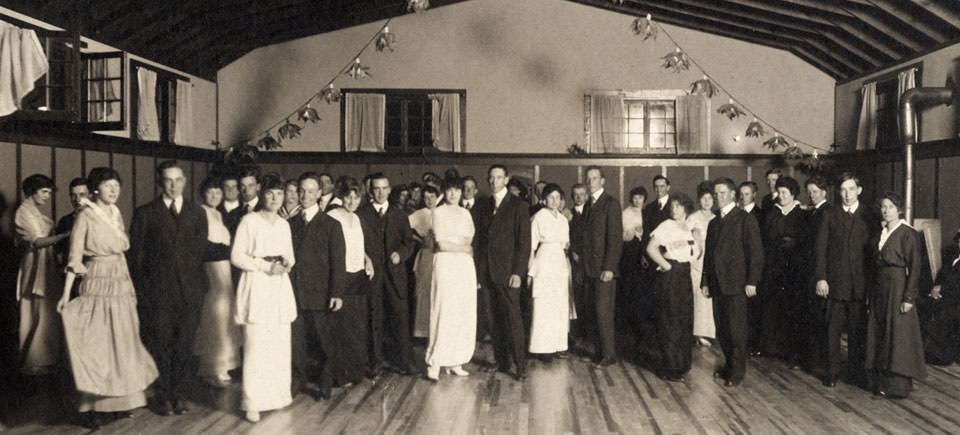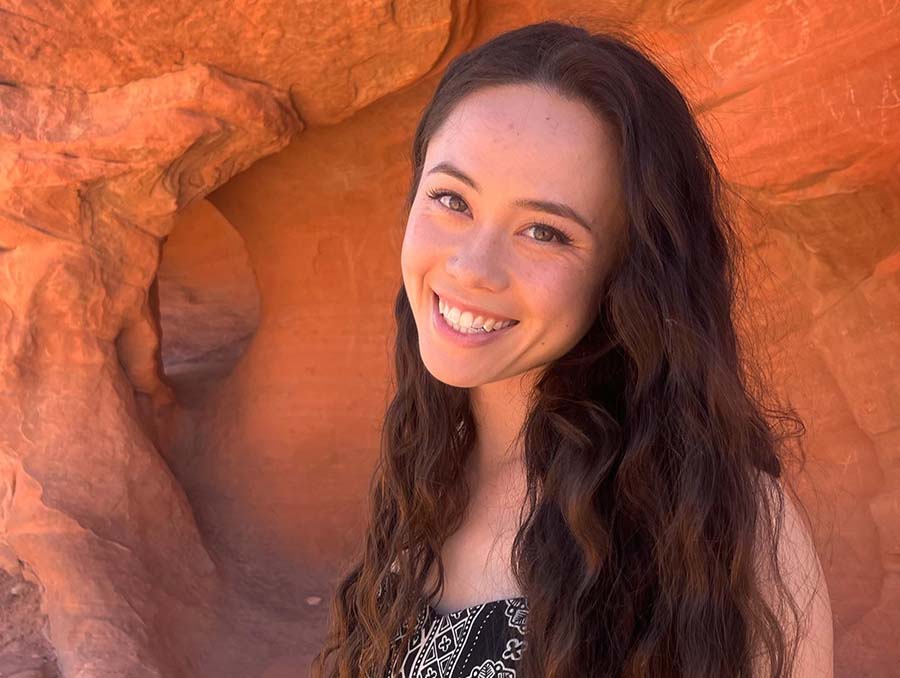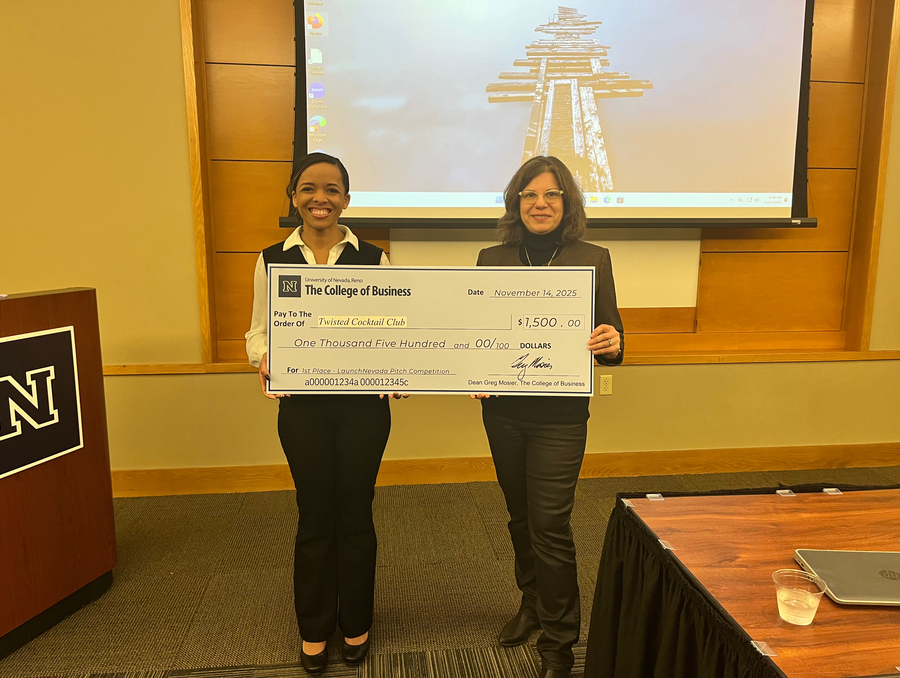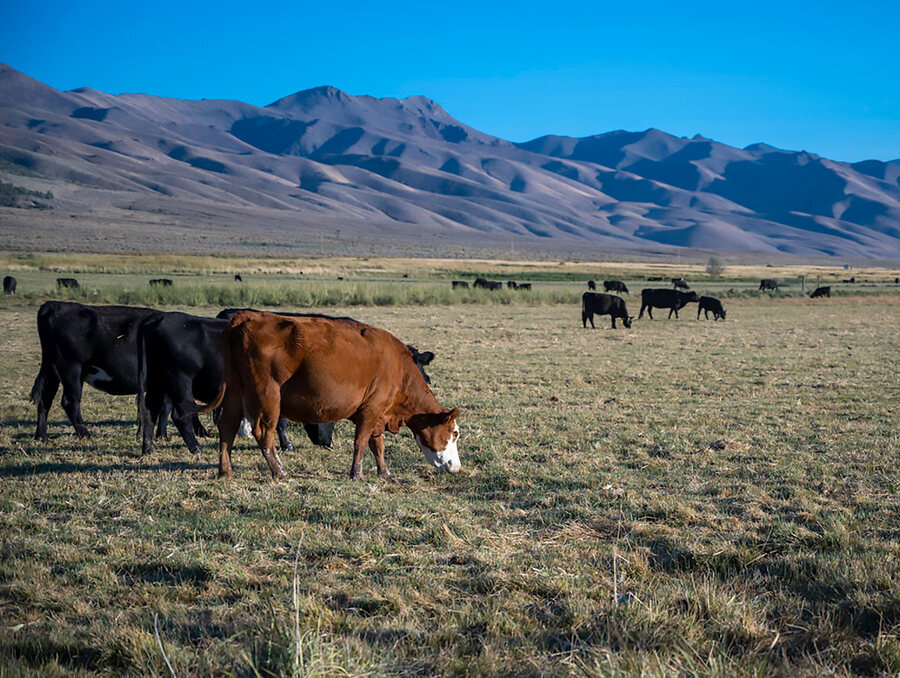In 1911, a young Joe McDonald and Leola Lewis, a freshman and junior, were meeting at University of Nevada, Reno's Morrill Hall to study in the basement library, living the day-to-day life of college students, doing the typical activities that college students did - without the Internet, without technology, without social media.
McDonald and Lewis, just starting to court, probably would have had Facebook pages if they could have. The University's Special Collections and University Archives Department provides a new opportunity, 99 years later, for Joe, who would become president of Reno Newspapers, Inc., and Leola, his wife-to-be, to have those pages.
Special Collections staff has spent much time researching the lives of McDonald and Lewis, with support, photos and manuscripts provided by the McDonald family. The research has explored where they lived in Reno, when they attended the University and when they married each other nearly 100 years ago. Through Facebook postings, Donnelyn Curtis, director of Special Collections, and her team have resurrected the couple's lives and personalities, shared their moments and memories from what the couple left behind in photos and writings, and from Reno and campus newspaper stories and other historical accounts.
Curtis saw Facebook as an opportunity to teach and engage students in history by reliving the lives of two undergraduates at the University just setting out to pursue their careers and raise their family.
"I had the strangest dream. I walked up the little hill above campus and there were these huge brick buildings -- like cathedrals! I walked up some stairs into one of them called a 'Knowledge Center' and there was a counter that said 'library services' but it wasn't a library, because people were eating, and talking and laughing, and I didn't see bookshelves." - Joe McDonald, Facebook post
"We thought that it would be interesting to resurrect Joe and Leola and relive their younger years," Curtis said. "Everyone is on Facebook, especially students; it gives current-day students a chance to know what happened historically on campus and to experience the vivid lives of the couple."
Special Collections plans to expand into other time periods, using other Nevada alumni. The department is doing two things. First, imagining what real individuals who lived in the past would have done with Facebook and related technologies such as digital photography and audio/video, and second, imagining that their Facebook friends could go back in time, through learning about them and interacting with them.
"It's awakening to learn about my grandparents' years as students at the University and how their experiences shaped them as a couple," said Margaret McDonald, one of the McDonald's granddaughters. "We are learning about the history of Reno through their eyes as typical college students at the time."
"I would like to experiment with having graduates from the late 1950s and early 1960s maintain their own Facebook pages for their college-aged selves," Curtis said. "The idea is to replicate the alumni's social lives of the time and share their memories as though they were students, through Facebook, with technical support and some digital historical content from Special Collections and University Archives."
Social media is a new way of educating and connecting to students. More and more educational professionals use social media platforms to teach history to their students. "It bridges the gap between history and common knowledge these days," Curtis said. "Instead of using long University archives and biographies, we are using Facebook to tell the history of the University, keeping it interactive and friendlier. It's a good way to get the attention of students."
Joe and Leola's pages have been receiving more attention lately with posts and pictures posted.
"It seems that their friends are really interested in finding out how life was back then," Curtis said. "They are eager to see the development in their career and relationship as well as the University history itself.
"It's an experiment, and we'll keep it going as long as it is useful and interesting," Curtis said. "In talking to a few people, I think they are enjoying reading the updates and seeing the photos. "We're working on how to add more audio and video."
You can visit Joe McDonald and Leola Lewis' pages on Facebook to keep up with their past.
Who was Joe McDonald?
As a student at the University of Nevada, Joseph F. McDonald was actively involved in sports, his fraternity, student government and local politics, and was a business manager of The Sagebrush, the student newspaper. He graduated in the spring of1915 with a degree in mechanical engineering, and that November married Leola Lewis, who had graduated in 1913. After working for a short time in a mine in Tonopah, Joe began working as a reporter for the Reno Evening Gazette, and later became the editor of the Nevada State Journal, and then served as the newspaper's publisher. He retired in 1956 as president of Reno Newspapers Incorporated. The Reno Evening Gazette and Nevada State Journal later merged and became the Reno Gazette-Journal. After retirement, he became the president of the Nevada-California Lake Tahoe Association, the first organization to guide development at the lake. He served Reno as a member of several boards, commissions and community organizations before his death in 1971 at the age of 80.
A rich supply of materials in Special Collections made it possible for the Special Collections staff and student assistants to project how Joe and Leola would have participated in social networking:
The Joseph F. McDonald, Sr. photographs
The Joseph F. McDonald, Sr. manuscript collection and transcript of Joe's oral history
More photos from the University Archives
Special Collections received the approval from Joe's granddaughter, Peggy McDonald, to carry out the project. The department gladly accepts materials that document Nevada and University history.











